Toshiba M405, M400 User Manual

Portégé® M400/M405
Series User’s Guide
If you need assistance:
Toshiba’s Support Web site pcsupport.toshiba.com
Toshiba Global Support Centre
Calling within the United States (800) 457-7777 Calling from outside the United States (949) 859-4273
For more information, see “If Something Goes Wrong” on page 224 in this guide.
PMAD00081011
09/06

2
Handling the cord on this product will expose you to lead, a chemical known to the State of California to cause birth defects or other reproductive harm. Wash hands after handling.
Model: Portégé® M400/M405 Series
Recordable and/or ReWritable Drive(s) and Associated Software Warranty
The computer system you purchased may include Recordable and/or ReWritable optical media drive(s) and associated software, among the most advanced data storage technologies available. As with any new technology, you must read and follow all set-up and usage instructions in the applicable user guides and/or manuals enclosed or provided electronically. If you fail to do so, this product may not function properly and you may lose data or suffer other damage. TOSHIBA AMERICA INFORMATION SYSTEMS, INC. (“TOSHIBA”), ITS AFFILIATES AND SUPPLIERS DO NOT WARRANT THAT OPERATION OF THE PRODUCT WILL BE UNINTERRUPTED OR ERROR FREE. YOU AGREE THAT TOSHIBA, ITS AFFILIATES AND SUPPLIERS SHALL HAVE NO RESPONSIBILITY FOR DAMAGE TO OR LOSS OF ANY BUSINESS, PROFITS, PROGRAMS, DATA, NETWORK SYSTEMS OR REMOVABLE STORAGE MEDIA ARISING OUT OF OR RESULTING FROM THE USE OF THE PRODUCT, EVEN IF ADVISED OF THE POSSIBILITY THEREOF.
Protection of Stored Data
For your important data, please make periodic back-up copies of all the data stored on the hard disk or other storage devices as a precaution against possible failures, alteration, or loss of the data. IF YOUR DATA IS ALTERED OR
LOST DUE TO ANY TROUBLE, FAILURE OR MALFUNCTION OF THE HARD DISK DRIVE OR OTHER STORAGE DEVICES AND THE DATA CANNOT BE RECOVERED, TOSHIBA SHALL NOT BE LIABLE FOR ANY DAMAGE OR LOSS OF DATA, OR ANY OTHER DAMAGE RESULTING THEREFROM. WHEN COPYING OR TRANSFERRING YOUR DATA, PLEASE BE SURE TO CONFIRM WHETHER THE DATA HAS BEEN SUCCESSFULLY COPIED OR TRANSFERRED. TOSHIBA DISCLAIMS ANY LIABILITY FOR THE FAILURE TO COPY OR TRANSFER THE DATA CORRECTLY.

3
Critical Applications
The computer you have purchased is not designed for any “critical applications.” “Critical applications” means life support systems, medical applications, connections to implanted medical devices, commercial transportation, nuclear facilities or systems or any other applications where product failure could lead to injury to persons or loss of life or catastrophic property damage.
ACCORDINGLY, TOSHIBA, ITS AFFILIATES AND SUPPLIERS DISCLAIM ANY AND ALL LIABILITY ARISING OUT OF THE USE OF THE COMPUTER PRODUCTS IN ANY CRITICAL APPLICATIONS. IF YOU USE THE COMPUTER PRODUCTS IN A CRITICAL APPLICATION, YOU, AND NOT TOSHIBA, ASSUME FULL RESPONSIBILITY FOR SUCH USE.
FCC Notice “Declaration of Conformity Information”
This equipment has been tested and found to comply with the limits for a Class B digital device, pursuant to Part 15 of the FCC rules. These limits are designed to provide reasonable protection against harmful interference in a residential installation.
This equipment generates, uses and can radiate radio frequency energy and, if not installed and used in accordance with the instructions, it may cause harmful interference to radio communications. However, there is no guarantee that interference will not occur in a particular installation. If this equipment does cause harmful interference to radio or television reception, which can be determined by turning the equipment off and on, the user is encouraged to try to correct the interference by one or more of the following measures:
Reorient or relocate the receiving antenna.
Increase the separation between the equipment and receiver.
Connect the equipment to an outlet on a circuit different from that to which the receiver is connected.
Consult the dealer or an experienced radio/TV technician for help.
NOTE |
Only Peripherals complying with the FCC Class B limits may be attached to this |
|
equipment. Operation with noncompliant peripherals or peripherals not |
|
recommended by Toshiba is likely to result in interference to radio and TV |
|
reception. Shielded cables must be used between the external devices and the |
|
computer's parallel port, monitor port, USB port, PS/2 port®, i.LINK® port and |
|
microphone jack (Port availability depends on model selected). Changes or |
|
modifications made to this equipment not expressly approved by Toshiba or parties |
|
authorized by Toshiba could void the user's authority to operate the equipment. |
|
|

4
This device complies with Part 15 of the FCC Rules. Operation is subject to the following two conditions:
This device may not cause harmful interference.
This device must accept any interference received, including interference that may cause undesired operation.
Contact either:
Toshiba’s Support Web site at pcsupport.toshiba.com.
Or call the Toshiba Global Support Centre: Within the United States at (800) 457-7777 Outside the United States at (949) 859-4273
Industry Canada Requirement
This Class B digital apparatus complies with Canadian ICES-003.
Cet appareil numérique de la classe B est conformé à la norme NMB-003 du Canada.
FCC requirements
The following information is pursuant to FCC CFR 47, Part 68 and refers to internal modems.
This equipment complies with Part 68 of the FCC rules. On the bottom of this equipment is a label that contains, among other information, the FCC registration number and ringer equivalence number (REN) for this equipment. If requested, the information must be provided to the telephone company.
The modem connects to the telephone line by means of a standard jack called the USOC RJ11C.
A plug and jack used to connect this equipment to the premises wiring and telephone network must comply with the applicable FCC part 68 rules and requirements adopted by the ACTA. It is designed to be connected to a compatible modular jack that is also compliant.
The REN is used to determine the number of devices that may be connected to a telephone line. Excessive RENs on a telephone line may result in the devices not ringing in response to an incoming call. In most but not all areas, the sum of RENs should not exceed five (5.0). To be certain of the number of devices that may be connected to a line, as determined by the total RENs, contact the local telephone company. For products approved after July 23, 2001, the REN for this product is part of the product identifier that has the format US:AAAEQ##TXXXX. The digits represented by the ## are the REN without a

5
decimal point (e.g., 03 is a REN of 0.3). For earlier products, the REN is separately shown on the label.
Connection to party line service is subject to state tariffs. Contact the state public utility commission, public service commission or corporation commission for information.
Telephone Company Procedures
The goal of the telephone company is to provide you with the best service it can. In order to do this, it may occasionally be necessary for them to make changes in their equipment, operations or procedures. If these changes might affect your service or the operation of your equipment, the telephone company will give you notice, in writing, to allow you to make any changes necessary to maintain uninterrupted service.
If Problems Arise
If this equipment causes harm to the telephone network, the telephone company will notify you in advance that temporary discontinuance of service may be required. But if advanced notice is not practical, the telephone company will notify the customer as soon as possible. Also, you will be advised of your right to file a complaint with the FCC if you believe it is necessary.
If trouble is experienced with this equipment, for repair or limited warranty information, please contact Toshiba Corporation, Toshiba America Information Systems, Inc. or an authorized representative of Toshiba, or the Toshiba Support Centre within the United States at (800) 457-7777 or Outside the United States at (949) 859-4273. If the equipment is causing harm to the telephone network, the telephone company may request that you disconnect the equipment until the problem is resolved.
Disconnection
If you should ever decide to permanently disconnect your modem from its present line, please call the telephone company and let them know of this change.
Fax Branding
The Telephone Consumer Protection Act of 1991 makes it unlawful for any person to use a computer or other electronic device, including Fax machines, to send any message unless such message clearly contains in a margin at the top or bottom of each transmitted page or on the first page of the transmission, the date and time it is sent and an identification of the business or other entity, or other individual sending the message and the telephone number of the sending machine or such business, other entity, or individual. (The telephone number

6
provided may not be a 900 number or any other number for which charges exceed local or long-distance transmission charges.)
In order to program this information into your fax transmission, refer to the fax software instructions installed on this computer.
Alarm Equipment
If your home has specially wired alarm equipment connected to the telephone line, ensure the installation of this equipment does not disable your alarm equipment. If you have questions about what will disable alarm equipment, consult your telephone company or a qualified installer.
Instructions for IC CS-03 Certified Equipment
1NOTICE: The Industry Canada label identifies certified equipment. This certification means that the equipment meets certain telecommunications network protective, operational and safety requirements as prescribed in the appropriate Terminal Equipment Technical Requirements document(s). The Department does not guarantee the equipment will operate to the user’s satisfaction.
Before installing this equipment, users should ensure that it is permissible to be connected to the facilities of the local telecommunications company. The equipment must also be installed using an acceptable method of connection. The customer should be aware that compliance with the above conditions may not prevent degradation of service in some situations.
Repairs to certified equipment should be coordinated by a representative designated by the supplier. Any repairs or alterations made by the user to this equipment, or equipment malfunctions, may give the telecommunications company cause to request the user to disconnect the equipment.
Users should ensure for their own protection that the electrical ground connections of the power utility, telephone lines and internal metallic water pipe system, if present, are connected together. This precaution may be particularly important in rural areas.
Caution: Users should not attempt to make such connections themselves, but should contact the appropriate electric inspection authority, or electrician, as appropriate.
2The user manual of analog equipment must contain the equipment’s Ringer Equivalence Number (REN) and an explanation notice similar to the following:
The Ringer Equivalence Number (REN) of this device can be found on the label affixed to your computer.
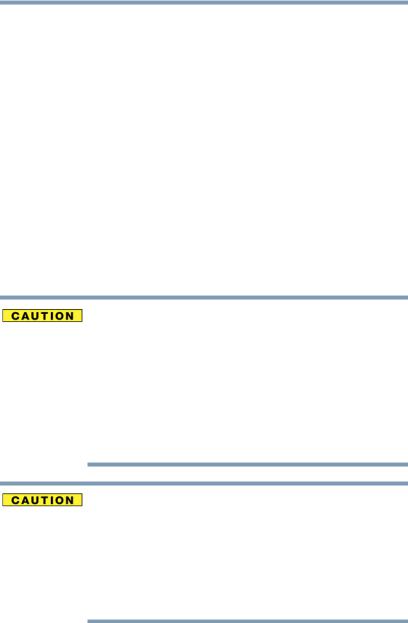
7
NOTICE: The Ringer Equivalence Number (REN) assigned to each terminal device provides an indication of the maximum number of terminals allowed to be connected to a telephone interface. The termination on an interface may consist of any combination of devices subject only to the requirement that the sum of the Ringer Equivalence Numbers of all the devices does not exceed 5.
3The standard connecting arrangement (telephone jack type) for this equipment is jack type(s): USOC RJ11C.
Wireless Interoperability
The TOSHIBA Wireless LAN Mini PCI Card products are designed to be interoperable with any wireless LAN product that is based on Direct Sequence Spread Spectrum (DSSS) radio technology, and is compliant to:
The IEEE 802.11 Standard on Wireless LANs (Revision A/B/G), as defined and approved by the Institute of Electrical and Electronics Engineers.
The Wireless Fidelity (Wi-Fi) certification as defined by the Wi-Fi Alliance. The “Wi-Fi CERTIFIED” logo is a certification mark of the Wi-Fi Alliance.
Bluetooth® and Wireless LAN devices operate within the same radio frequency range and may interfere with one another. If you use Bluetooth and Wireless LAN devices simultaneously, you may occasionally experience a less than optimal network performance or even lose your network connection.
If you should experience any such problem, immediately turn off your
Bluetooth or Wireless LAN device.
Please contact Toshiba computer product support on Web site http://www.toshiba-europe.com/computers/tnt/bluetooth.htm in Europe or pcsupport.toshiba.com in the United States for more information.
Radio Frequency Interference Requirements
This device is restricted to indoor use due to its operation in the 5.15 GHz to 5.25 GHz frequency range. FCC requires this product to be used indoors for frequency range 5.15 GHz to 5.25 GHz to reduce the potential for harmful interference to co-channel Mobile Satellite systems.
High power radars are allocated as primary users of the 5.25 GHz to 5.35 GHz and 5.65 GHz to 5.85 GHz bands. These radar stations can cause interference with and/or damage this device.
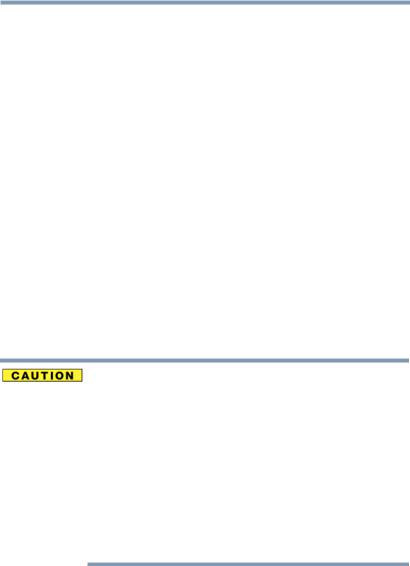
8
Wireless LAN and Your Health
Wireless LAN products, like other radio devices, emit radio frequency electromagnetic energy. The level of energy emitted by Wireless LAN devices however is far much less than the electromagnetic energy emitted by wireless devices like for example mobile phones.
Because Wireless LAN products operate within the guidelines found in radio frequency safety standards and recommendations, TOSHIBA believes Wireless LAN is safe for use by consumers. These standards and recommendations reflect the consensus of the scientific community and result from deliberations of panels and committees of scientists who continually review and interpret the extensive research literature.
In some situations or environments, the use of Wireless LAN may be restricted by the proprietor of the building or responsible representatives of the organization. These situations may for example include:
Using the Wireless LAN equipment on board airplanes, or
In any other environment where the risk of interference to other devices or services is perceived or identified as harmful.
If you are uncertain of the policy that applies on the use of wireless devices in a specific organization or environment (e.g. airports), you are encouraged to ask for authorization to use the Wireless LAN device prior to turning on the equipment.
Exposure to Radio Frequency Radiation
The radiated output power of the TOSHIBA Wireless LAN Mini PCI Card is far below the FCC radio frequency exposure limits. Nevertheless, the TOSHIBA Wireless LAN Mini PCI Card shall be used in such a manner that the potential for human contact during normal operation is minimized. In normal operating configuration, the LCD in the upright position, the distance between the antenna and the user should not be less than 20 cm. The antenna(s) used for this transmitter must not be co-located or operating in conjunction with any other antenna or transmitter. Antenna(s) used in 5.15 GHz to 5.25 GHz frequency band must be integral antenna which provide no access to the end user.
Refer to the Regulatory Statements as identified in the documentation that comes with those products for additional information.
Regulatory Information
The TOSHIBA Wireless LAN Mini PCI Card must be installed and used in strict accordance with the manufacturer’s instructions as described in the user
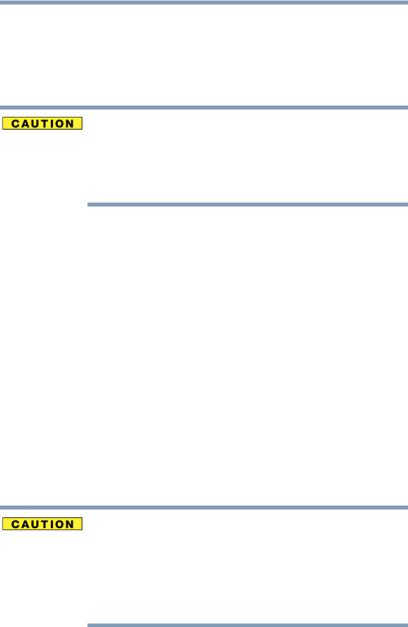
9
documentation that comes with the product. This device complies with the following radio frequency and safety standards.
Canada – Industry Canada (IC)
This device complies with RSS 210 of Industry Canada.
The installer of this radio equipment must ensure that the antenna is located or pointed such that it does not emit RF field in excess of Health Canada limits for the general population; consult Safety Code 6, obtainable from Health Canada’s Web site www.hc-sc.gc.ca/rpb. The RF device shall not be co-located with any other transmitter that has not been tested with this device.
Operation is subject to the following two conditions: (1) this device may not cause interference, and (2) this device must accept any interference, including interference that may cause undesired operation of this device.
L’utilisation de ce dispositif est autorisée seulement aux conditions suivantes: (1) il ne doit pas produire de brouillage et (2) l’utilisateur du dispositif doit étre prêt à accepter tout brouillage radioélectrique reçu, même si ce brouillage est susceptible de compromettre le fonctionnement du dispositif.
The term “IC” before the equipment certification number only signifies that the Industry Canada technical specifications were met.
To prevent radio interference to the licensed service, this device is intended to be operated indoors and away from windows to provide maximum shielding. Equipment (or its transmit antenna) that is installed outdoors is subject to licensing.
Pour empecher que cet appareil cause du brouillage au service faisant l'objet d'une licence, il doit etre utilize a l'interieur et devrait etre place loin des fenetres afin de Fournier un ecram de blindage maximal. Si le matriel (ou son antenne d'emission) est installe a l'exterieur, il doit faire l'objet d'une licence.
This device is restricted to indoor use due to its operation in the 5.15 GHz to 5.25 GHz frequency range. Industry Canada requires this product to be used indoors for frequency range 5.15 GHz to 5.25 GHz to reduce the potential for harmful interference to co-channel Mobile Satellite systems.
High power radars are allocated as primary users of the 5.25 GHz to 5.35 GHz and 5.65 GHz to 5.85 GHz bands. These radar stations can cause interference with and/or damage this device.

10
EU Declaration of Conformity
TOSHIBA declares that this product conforms to the following Standards:
Supplementary *The product complies with the Information: requirements of the Low Voltage Directive
72/23/EEC, the EMC Directive 89/336/ EEC and/or the R&TTE Directive 1999/5/EC.
This product is carrying the CE-Mark in accordance with the related European Directives. Responsible for CE-Marking is TOSHIBA Europe GmbH, Hammfelddamm 8, 41460 Neuss, Germany.
VCCI Class B Information
Modem Warning Notice
Conformity Statement
The equipment has been approved to [Commission Decision “CTR-21”] for panEuropean single terminal connection to the Public Switched Telephone Network (PSTN).
However, due to differences between the individual PSTNs provided in different countries/regions the approval does not, of itself, give an unconditional assurance of successful operation on every PSTN network termination point.
In the event of problems, you should contact your equipment supplier in the first instance.
NOTE The above Caution information applies to products that operate with an 802.11a device.
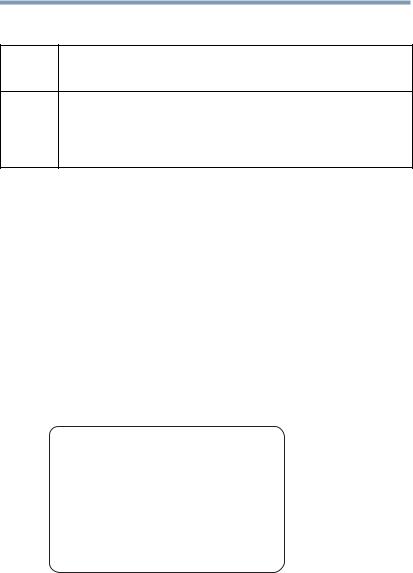
11
Taiwan
Article 14 Unless approved, for any model accredited low power radio frequency electric machinery, any company, trader or user shall not change the frequency, increase the power or change the features and functions of the original design.
Article 17 Any use of low power radio frequency electric machinery shall not affect aviation safety and interfere with legal communications. In the event interference is caused, the use of such electric machinery shall be immediately discontinued. Operation of such products can be resumed only when they are modified and can no longer cause interference.
The legal communications mentioned in the above item refer to radio communications operated in accordance with telecommunication laws and regulations.
Low power radio frequency electric machinery shall resist against interference from legal communications or from industrial, scientific and medical radio emission electric machinery.
Using this Equipment in Japan
In Japan, the frequency bandwidth of 2,400 MHz to 2,483.5 MHz for second generation low-power data communication systems such as this equipment overlaps that of mobile object identification systems (premises radio station and specified low-power radio station).
1. Sticker
Please put the following sticker on devices incorporating this product.
The frequency bandwidth of this equipment may operate within the same range as industrial devices, scientific devices, medical devices, microwave ovens, licensed radio stations and non-licensed specified low-power radio stations for mobile object identification systems (RFID) used in factory product lines (Other Radio Stations).
1.Before using this equipment, ensure that it does not interfere with any of the equipment listed above.
2.If this equipment causes RF interference to other radio stations, promptly change the frequency being used, change the location of use, or turn off the source of emissions.
3.Contact TOSHIBA Direct PC if you have problems with interference caused by this product to Other Radio Stations.

12
2. Indication
The indication shown below appears on this equipment.
(1)(2) (3)
2.4DSOF4
(4)
12.4: This equipment uses a frequency of 2.4 GHz.
2DS: This equipment uses DS-SS modulation. OF: This equipment uses OFDM modulation.
3The interference range of this equipment is less than 40m.
4

 This equipment uses a frequency bandwidth from 2,400 MHz to 2,483.5 MHz.
This equipment uses a frequency bandwidth from 2,400 MHz to 2,483.5 MHz.
It is possible to avoid the band of mobile object identification systems.
3. TOSHIBA Direct PC
Monday – Friday: 10:00 – 17:00
Toll Free Tel: 0120-15-1048
Direct Dial: 03-3457-4850
Fax: 03-3457-4868
Device Authorization
This device obtains the Technical Regulation Conformity Certification and the Technical Conditions Compliance Approval, and it belongs to the device class of radio equipment of low-power data communication system radio station stipulated in the Radio Law and the Telecommunications Business Law of Japan.
The Name of the radio equipment: refer to the equipment label provided on the computer
JAPAN APPROVALS INSTITUTE FOR TELECOMMUNICATIONS EQUIPMENT
Approval Number: D01-1128JP
TELECOM ENGINEERING CENTER Approval Number: 03NY.A0018, 03GZDA0017
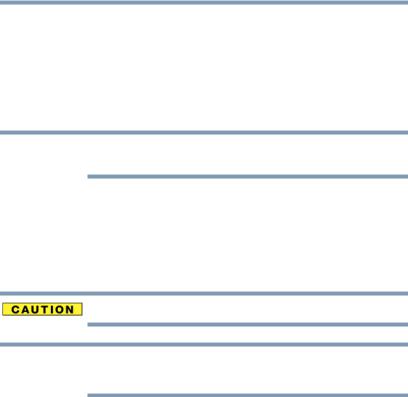
13
The following restrictions apply:
Do not disassemble or modify the device.
Do not install the embedded wireless module into other device.
5.17 GHz to 5.23 GHz for indoor use only.
Radio Approvals for Wireless Devices
NOTE The following information is dependent on what type of wireless device is in your computer.
Approved Countries/Regions for use for the Atheros AR5BMB-43/44 and AR5BMB5 Mini PCI Wireless Network Adapters
This equipment is approved to the radio standard by the countries/regions in the following table.
Do not use this equipment except in the countries/regions in the following table.
NOTE This device works on passive scan only.
A peer-to-peer mode is not available in 802.11a and Turbo Mode.
802.11b (2.4 GHz)
Australia |
Austria |
Belgium |
|
|
|
Canada |
Denmark |
Finland |
|
|
|
France |
Germany |
Greece |
|
|
|
Ireland |
Italy |
Liechtenstein |
|
|
|
Luxembourg |
Netherlands |
New Zealand |
|
|
|
Norway |
Portugal |
Sweden |
|
|
|
Switzerland |
UK |
USA |
|
|
|

14
Europe - Restrictions for use of 2.4 GHz Frequencies in European Community Countries
België/ |
For private usage outside buildings across public grounds over less than |
Belgique: |
300m no special registration with IBPT/BIPT is required. Registration to |
|
IBPT/BIPT is required for private usage outside buildings across public |
|
grounds over more than 300m. For registration and license please |
|
contact IBPT/BIPT. |
|
|
|
Voor privé-gebruik buiten gebouw over publieke groud over afstand |
|
kleiner dan 300m geen registratie bij BIPT/IBPT nodig; voor gebruik |
|
over afstand groter dan 300m is wel registratie bij BIPT/IBPT nodig. |
|
Voor registratie of licentie kunt u contact opnemen met BIPT. |
|
|
|
Dans le cas d’une utilisation privée, à l’extérieur d’un bâtiment, au- |
|
dessus d’un espace public, aucun enregistrement n’est nécessaire pour |
|
une distance de moins de 300m. Pour une distance supérieure à 300m un |
|
enregistrement auprès de I’IBPT est requise. Pour les enregistrements et |
|
licences, veuillez contacter I’IBPT. |
|
|
Deutschland: |
License required for outdoor installations. Check with reseller for |
|
procedure to follow. |
|
|
|
Anmeldung im Outdoor-Bereich notwendig, aber nicht |
|
genehmigungspflichtig.Bitte mit Händler die Vorgehensweise |
|
abstimmen. |
|
|
France: |
Restricted frequency band: only channels 1 to 7 (2400 MHz and 2454 |
|
MHz respectively) may be used outdoors in France. Please contact |
|
A.R.T. (http://www.art-telecom.fr) for applicable procedures to follow. |
|
|
|
Bande de fréquence restreinte: seuls les canaux 1- 7 (2400 et 2454 MHz |
|
respectivement) doivent être utilisés endroits extérieur en France. Vous |
|
pouvez contacter I’Autorité de Régulation des Télécommuniations |
|
(http://www.art-telecom.fr) pour la procédure à suivre. |
|
|
Italia: |
License required for indoor use. Use with outdoor installations not |
|
allowed. |
|
|
|
E’necessaria la concessione ministeriale anche per l’uso interno. |
|
Verificare con i rivenditori la procedura da seguire. |
|
|
Nederland: |
License required for outdoor installations. Check with reseller for |
|
procedure to follow. |
|
|
|
Licentie verplicht voor gebruik met buitenantennes. Neem contact op |
|
met verkoper voor juiste procedure. |
|
|

15
802.11a (5 GHz)
|
Australia |
|
Austria |
|
|
Belgium |
|
|
|
|
|
|
|
|
|
|
Canada |
|
Denmark |
Finland |
|||
|
|
|
|
|
|
|
|
|
France |
|
Germany |
Greece |
|||
|
|
|
|
|
|
|
|
|
Ireland |
|
Italy |
|
|
Liechtenstein |
|
|
|
|
|
|
|
|
|
|
Luxembourg |
|
Netherlands |
New Zealand |
|||
|
|
|
|
|
|
|
|
|
Norway |
|
Portugal |
Sweden |
|||
|
|
|
|
|
|
|
|
|
Switzerland |
|
UK |
|
|
USA |
|
|
|
|
|
|
|
|
|
|
Turbo Mode (5 GHz) |
|
|
|
|||
|
|
|
|
|
|
|
|
|
Canada |
|
USA |
|
|
|
|
|
|
|
|
|
|
||
|
Europe - Restrictions for Use of 5 GHz Frequencies in |
||||||
|
European Community Countries |
|
|||||
|
|
|
|
|
|
||
European Community |
5150-5250 MHz |
|
5250-5350 MHz |
|
5470-5725 MHz |
||
Countries |
Channels: 36, 40, 44, |
|
Channels: 52, 56, 60, |
|
Channels: 100, 104, 108, 112, |
||
|
|
48 |
|
|
64 |
|
116, 120, 124, 128, 132, 136, 140 |
|
|
Indoor Only |
|
Indoor Only |
|
Indoor/Outdoor |
|
|
|
|
|
|
|
||
Austria |
O |
|
x |
|
x |
||
|
|
|
|
|
|
||
Belgium, France, |
O |
|
O |
|
x |
||
Switzerland/Lichtenstein |
|
|
|
|
|
|
|
|
|
|
|
|
|
||
Denmark, Finland, |
O |
|
O |
|
O |
||
Germany, Greece, |
|
|
|
|
|
|
|
Ireland, Italy, |
|
|
|
|
|
|
|
Luxembourg, |
|
|
|
|
|
|
|
Netherlands, Norway, |
|
|
|
|
|
|
|
Portugal, Sweden, UK |
|
|
|
|
|
|
|
|
|
|
|
|
|
||
Iceland, Spain |
O |
|
O |
|
O |
||
|
|
|
|
|
|
|
|
O: allowed ×: forbidden
To remain in conformance with European spectrum usage laws for Wireless LAN operation, the above 2.4 GHz and 5 GHz channel limitations apply. The user should use the wireless LAN utility to check the current channel of operation. If operation is occurring outside of the allowable frequencies as listed above, the user must cease operating the Wireless LAN at that location and consult the local technical support staff responsible for the wireless network.
The 5 GHz Turbo mode feature is not allowed for operation in any European Community country.
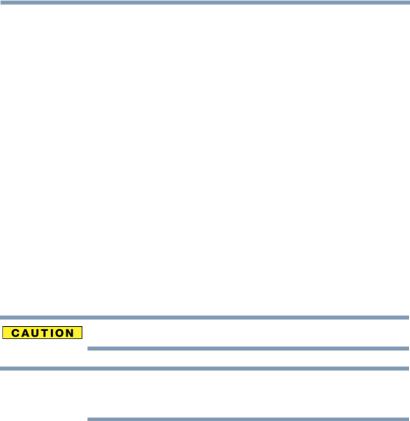
16
This device must not be operated in ad-hoc mode using channels in the
5 GHz bands in the European Community. Ad-hoc mode provides a direct communication between two client devices without a Wireless LAN Access Point.
This device must be used with Access Points that have employed and activated a radar detection feature required for European Community operation in the 5 GHz bands. This device will operate under the control of the Access Point in order to avoid operating on a channel occupied by any radar system in the area. The presence of nearby radar operation may result in temporary interruption of operation of this device. The Access Point’s radar detection feature will automatically restart operation on a channel free of radar. You may consult with the local technical support staff responsible for the wireless network to ensure the Access Point device(s) are properly configured for European Community operation.
Approved Countries/Regions for use for the Atheros AR5001X Mini PCI Wireless Network Adapter
This equipment is approved to the radio standard by the countries/regions in the following table.
Do not use this equipment except in the countries/regions in the following table.
NOTE This device works on passive scan only.
A peer-to-peer mode is not available in 802.11a and Turbo Mode.
802.11b (2.4 GHz)
Australia |
Austria |
Belgium |
|
|
|
Canada |
Denmark |
Finland |
|
|
|
France |
Germany |
Greece |
|
|
|
Ireland |
Italy |
Liechtenstein |
|
|
|
Luxembourg |
Netherlands |
New Zealand |
|
|
|
Norway |
Portugal |
Sweden |
|
|
|
Switzerland |
UK |
USA |
|
|
|
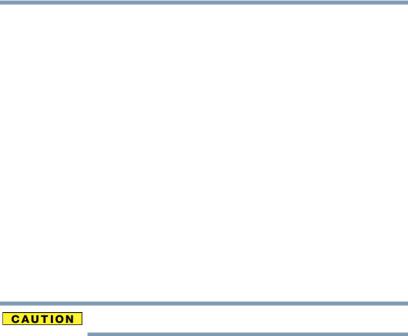
17
802.11a (5 GHz)
Australia |
Austria |
Belgium |
|
|
|
Canada |
Denmark |
Finland |
|
|
|
France |
Germany |
Greece |
|
|
|
Ireland |
Italy |
Liechtenstein |
|
|
|
Luxembourg |
Netherlands |
New Zealand |
|
|
|
Norway |
Portugal |
Sweden |
|
|
|
Switzerland |
UK |
USA |
|
|
|
Turbo Mode (5 GHz) |
|
|
|
|
|
Canada |
USA |
|
|
|
|
Approved Countries/Regions for use for the Intel® PRO/ Wireless LAN 2100 3B Mini PCI Adapter
This equipment is approved to the radio standard by the countries/regions in the following table.
Do not use this equipment except in the countries/regions in the following table.
Argentina |
Australia |
Austria |
|
|
|
Belgium |
Brazil |
Canada |
|
|
|
Chile |
Denmark |
Finland |
|
|
|
France |
Germany |
Greece |
|
|
|
Iceland |
Ireland |
Italy |
|
|
|
Japan |
Liechtenstein |
Luxembourg |
|
|
|
Mexico |
Netherlands |
New Zealand |
|
|
|
Norway |
Peru |
Portugal |
|
|
|
Singapore |
Spain |
Sweden |
|
|
|
Switzerland |
UK |
Uruguay |
|
|
|
USA |
Venezuela |
|
|
|
|
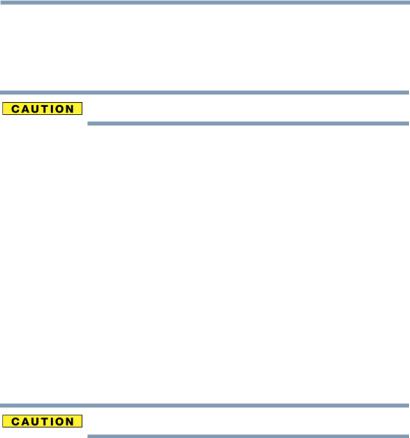
18
Approved Countries/Regions for use for the Toshiba Mini PCI Wireless LAN Card
This equipment is approved to the radio standard by the countries/regions in the following table.
Do not use this equipment except in the countries/regions in the following table.
Australia |
Austria |
Belgium |
|
|
|
Canada |
Denmark |
Finland |
|
|
|
France |
Germany |
Greece |
|
|
|
Hong Kong |
Iceland |
Ireland |
|
|
|
Italy |
Japan |
Liechtenstein |
|
|
|
Luxembourg |
Malaysia |
Netherlands |
|
|
|
New Zealand |
Norway |
Philippines |
|
|
|
Portugal |
Singapore |
Spain |
|
|
|
Sweden |
Switzerland |
Thailand |
|
|
|
UK |
USA |
|
|
|
|
Approved Countries/Regions for use for the INPROCOMM IPN2220 Wireless Network Adapter
This equipment is approved to the radio standard by the countries/regions in the following table.
Do not use this equipment except in the countries/regions in the following table.
EU |
Canada |
Japan |
|
|
|
USA |
Australia |
New Zealand |
|
|
|
Bluetooth® Wireless Technology Interoperability
Bluetooth® Cards from TOSHIBA are designed to be interoperable with any product with Bluetooth wireless technology that is based on Frequency Hopping Spread Spectrum (FHSS) radio technology, and is compliant to:
Bluetooth Specification as defined and approved by The Bluetooth Special Interest Group.
Logo certification with Bluetooth wireless technology as defined by The Bluetooth Special Interest Group.
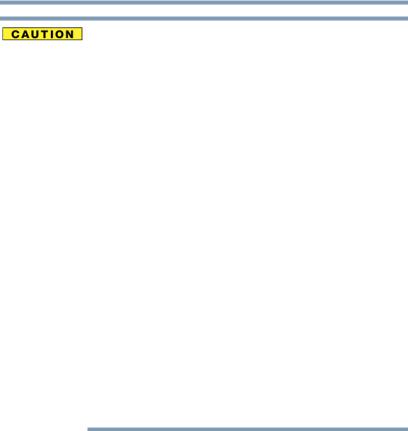
19
Bluetooth wireless technology is a new innovative technology, and TOSHIBA has not confirmed compatibility of its Bluetooth products with all computers and/or equipment using Bluetooth wireless technology other than TOSHIBA portable computers.
Always use Bluetooth cards from TOSHIBA in order to enable wireless networks over two or more (up to a total of seven) TOSHIBA portable computers using these cards. Please contact TOSHIBA computer product support on Web site http://www.toshiba-europe.com/computers/tnt/ bluetooth.htm in Europe or pcsupport.toshiba.com in the United States for more information.
When you use Bluetooth cards from TOSHIBA close to 2.4 GHz Wireless LAN devices, Bluetooth transmissions might slow down or cause errors. If you detect certain interference while you use Bluetooth cards from TOSHIBA, always change the frequency, move your computer to the area outside of the interference range of 2.4 GHz Wireless LAN devices (40 meters/43.74 yards or more) or stop transmitting from your computer. Please contact TOSHIBA computer product support on Web site http://www.toshiba-europe.com/ computers/tnt/bluetooth.htm in Europe or pcsupport.toshiba.com in the United States for more information.
Bluetooth and Wireless LAN devices operate within the same radio frequency range and may interfere with one another. If you use Bluetooth and Wireless LAN devices simultaneously, you may occasionally experience a less than optimal network performance or even lose your network connection. If you should experience any such problem, immediately turn off either one of your Bluetooth or Wireless LAN. Please contact Toshiba computer product support on Web site http://www.toshiba-europe.com/computers/tnt/ bluetooth.htm in Europe or pcsupport.toshiba.com in the United States for more information.
Bluetooth® Wireless Technology and Your Health
The products with Bluetooth® wireless technology, like other radio devices, emit radio frequency electromagnetic energy. The level of energy emitted by devices with Bluetooth wireless technology however is far much less than the electromagnetic energy emitted by wireless devices like for example mobile phones.
Because products with Bluetooth wireless technology operate within the guidelines found in radio frequency safety standards and recommendations, TOSHIBA believes Bluetooth wireless technology is safe for use by consumers. These standards and recommendations reflect the consensus of the scientific community and result from deliberations of panels and committees of scientists who continually review and interpret the extensive research literature.

20
In some situations or environments, the use of Bluetooth wireless technology may be restricted by the proprietor of the building or responsible representatives of the organization. These situations may for example include:
Using the equipment with Bluetooth wireless technology on board airplanes, or
In any other environment where the risk of interference to other devices or services is perceived or identified as harmful.
If you are uncertain of the policy that applies on the use of wireless devices in a specific organization or environment (e.g. airports), you are encouraged to ask for authorization to use the device with Bluetooth wireless technology prior to turning on the equipment.
Exposure to Radio Frequency Radiation
The radiated output power of the Bluetooth Card from TOSHIBA is far below the FCC radio frequency exposure limits. Nevertheless, the Bluetooth Card from TOSHIBA shall be used in such a manner that the potential for human contact during normal operation is minimized.
In order to comply with FCC radio-frequency radiation exposure guidelines for an uncontrolled environment, the Bluetooth Card from TOSHIBA has to be operated while maintaining a minimum body to antenna distance of 20 cm.
Refer to the Regulatory Statements as identified in the documentation that comes with those products for additional information.
The Bluetooth Card from TOSHIBA is far below the FCC radio frequency exposure limits.
Nevertheless, it is advised to use the Bluetooth Card from TOSHIBA in such a manner that human contact during normal operation is minimized.
Regulatory statements
This product complies with any mandatory product specification in any country/ region where the product is sold. In addition, the product complies with the following:
European Union (EU) and EFTA
This equipment complies with the R&TTE directive 1999/5/EC and has been provided with the CE mark accordingly.
Canada — Industry Canada (IC)
This device complies with RSS 210 of Industry Canada.
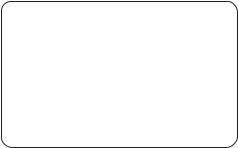
|
21 |
|
|
Taiwan |
|
|
|
Article 14 |
Unless approved, for any model accredited low power radio frequency |
|
electric machinery, any company, trader or user shall not change the |
|
frequency, increase the power or change the features and functions of the |
|
original design. |
|
|
Article 17 |
Any use of low power radio frequency electric machinery shall not affect |
|
aviation safety and interfere with legal communications. In the event |
|
interference is caused, the use of such electric machinery shall be |
|
immediately discontinued. Operation of such products can be resumed |
|
only when they are modified and can no longer cause interference. |
|
|
The legal communications mentioned in the above item refer to radio communications operated in accordance with telecommunication laws and regulations.
Low power radio frequency electric machinery shall resist against interference from legal communications or from industrial, scientific and medical radio emission electric machinery.
Using this Equipment in Japan
In Japan, the frequency bandwidth of 2,400 MHz to 2,483.5 MHz for second generation low-power data communication systems such as this equipment overlaps that of mobile object identification systems (premises radio station and specified low-power radio station).
1. Sticker
Please put the following sticker on devices incorporating this product.
The frequency bandwidth of this equipment may operate within the same range as industrial devices, scientific devices, medical devices, microwave ovens, licensed radio stations and non-licensed specified low-power radio stations for mobile object identification systems (RFID) used in factory product lines (Other Radio Stations).
1.Before using this equipment, ensure that it does not interfere with any of the equipment listed above.
2.If this equipment causes RF interference to other radio stations, promptly change the frequency being used, change the location of use, or turn off the source of emissions.
3.Contact TOSHIBA Direct PC if you have problems with interference caused by this product to Other Radio Stations.

22
2. Indication
The indication shown below appears on this equipment.
(1)(2) (3)
2.4FH1
(4)
12.4: This equipment uses a frequency of 2.4 GHz.
2FH: This equipment uses FH-SS modulation.
3The interference range of this equipment is less than 10m.
4This equipment uses a frequency bandwidth from 2,400 MHz to 2,483.5 MHz. It is impossible to avoid the band of mobile object identification systems.
3. TOSHIBA Direct PC
Monday – Friday: 10:00 – 17:00
Toll Free Tel: 0120-15-1048
Direct Dial: 03-3457-4850
Fax: 03-3457-4868
Device Authorization
This device obtains the Technical Regulation Conformity Certification, and it belongs to the device class of radio equipment of low-power data communication system radio station stipulated in the Radio Law of Japan.
The Name of the radio equipment: EYXF2CS
TELECOM ENGINEERING CENTER
Approval Number: 01NYDA1305
The following restrictions apply:
Do not disassemble or modify the device.
Do not install the embedded wireless module into other device.
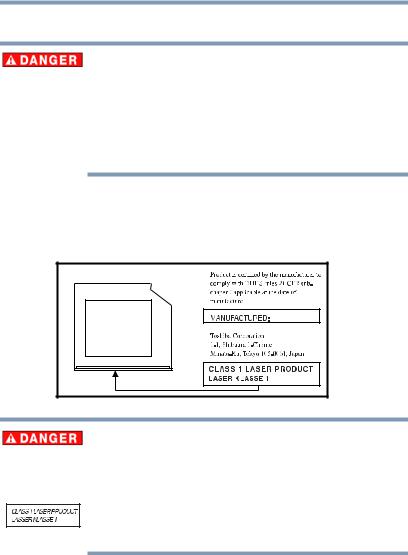
23
Optical Drive Safety Instructions
The HD DVD-ROM and multi-function drives employ a laser system. To ensure proper use of this product, please read this instruction manual carefully and retain for future reference.
Never attempt to disassemble, adjust or repair a HD DVD, CD/DVD drive, CD-RW drive, Multi-drive or any other optical drive. You could damage the drive.
You would also be exposed to laser light or other safety hazards, resulting in serious injury. Always contact an authorized Toshiba service provider, if any repair or adjustment is required.
Location of the Required Label
(Sample shown below. Location of the label and manufacturing information may
vary.) |
This appliance contains a laser system and is classified as a CLASS 1 LASER PRODUCT. To use this model properly, read the user’s guide carefully and keep it for your future reference.
Never attempt to disassemble, adjust or repair a HD DVD, CD/DVD drive, CD-RW drive, Multi-drive or any other optical drive. You could damage the drive. You would also be exposed to laser light or other safety hazards, resulting in serious injury. Always contact an authorized Toshiba service provider, if any repair or adjustment is required.

24
Copyright
This guide is copyrighted by Toshiba America Information Systems, Inc. with all rights reserved. Under the copyright laws, this guide cannot be reproduced in any form without the prior written permission of Toshiba. No patent liability is assumed, however, with respect to the use of the information contained herein.
©2006 by Toshiba America Information Systems, Inc. All rights reserved.
Export Administration Regulation
This document contains technical data that may be controlled under the U.S. Export Administration Regulations, and may be subject to the approval of the U.S. Department of Commerce prior to export. Any export, directly or indirectly, in contravention of the U.S. Export Administration Regulations is prohibited.
Notice
The information contained in this manual, including but not limited to any product specifications, is subject to change without notice.
TOSHIBA CORPORATION AND TOSHIBA AMERICA INFORMATION SYSTEMS, INC. (TOSHIBA) PROVIDES NO WARRANTY WITH REGARD TO THIS MANUAL OR ANY OTHER INFORMATION CONTAINED HEREIN AND HEREBY EXPRESSLY DISCLAIMS ANY IMPLIED WARRANTIES OF MERCHANTABILITY OR FITNESS FOR ANY PARTICULAR PURPOSE WITH REGARD TO ANY OF THE FOREGOING. TOSHIBA ASSUMES NO LIABILITY FOR ANY DAMAGES INCURRED DIRECTLY OR INDIRECTLY FROM ANY TECHNICAL OR TYPOGRAPHICAL ERRORS OR OMISSIONS CONTAINED HEREIN OR FOR DISCREPANCIES BETWEEN THE PRODUCT AND THE MANUAL. IN NO EVENT SHALL TOSHIBA BE LIABLE FOR ANY INCIDENTAL, CONSEQUENTIAL, SPECIAL, OR EXEMPLARY DAMAGES, WHETHER BASED ON TORT, CONTRACT OR OTHERWISE, ARISING OUT OF OR IN CONNECTION WITH THIS MANUAL OR ANY OTHER INFORMATION CONTAINED HEREIN OR THE USE THEREOF.

25
Trademarks
Portégé is a registered trademark of Toshiba America Information Systems, Inc. and/or Toshiba Corporation.
Microsoft and Windows are registered trademarks of Microsoft Corporation in the United States and/or other countries.
DirectX, Active Desktop, DirectShow, and Windows Media are registered trademarks of Microsoft Corporation.
ConfigFree is a trademark of Toshiba Corporation.
Wi-Fi is a registered trademark of the Wi-Fi Alliance.
Intel, Intel Core, Celeron, Centrino and Pentium are trademarks or registered trademarks of Intel Corporation or its subsidiaries in the United States and other countries.
TouchPad is a trademark of Synaptics, Inc.
Adobe and Photoshop are either registered trademarks or trademarks of Adobe Systems Incorporated in the United States and/or other countries.
Bluetooth word mark and logos are owned by the Bluetooth SIG, Inc. and any use of such marks by Toshiba is under license. Other trademarks and trade names are those of their respective owners.
All other brand and product names are trademarks or registered trademarks of their respective companies.
Computer Disposal Information
This product contains mercury. Disposal of this material may be regulated due to environmental considerations. For disposal, reuse or recycling information, please contact your local government or the Electronic Industries Alliance at www.eiae.org.

Contents |
|
Introduction................................................................................ |
35 |
This guide ............................................................... |
36 |
Safety icons ............................................................ |
37 |
Other icons used............................................... |
38 |
Other documentation .............................................. |
38 |
Service options ....................................................... |
39 |
Chapter 1: Getting Started......................................................... |
40 |
Selecting a place to work ........................................ |
40 |
Creating a computer-friendly environment........ |
40 |
Keeping yourself comfortable ........................... |
41 |
Precautions....................................................... |
41 |
Important information on your computer’s |
|
cooling fan .................................................. |
43 |
Setting up your computer ....................................... |
44 |
Setting up your software................................... |
45 |
Registering your computer with Toshiba ................ |
46 |
Adding optional external devices............................. |
46 |
Connecting to a power source ................................ |
47 |
Charging the main battery....................................... |
50 |
26

Contents |
|
|
|
27 |
|
Using the computer for the first time ...................... |
|
51 |
Opening the display panel ................................. |
|
51 |
Your computer’s features and specifications |
.... |
52 |
Turning on the power........................................ |
|
53 |
Adding memory (optional) ...................................... |
|
54 |
Installing a memory module ............................. |
|
54 |
Hard Drive Recovery Utilities .................................. |
|
55 |
Creating Recovery CDs/DVDs ........................... |
|
55 |
Hard Disk Drive Recovery using the recovery |
|
|
partition ...................................................... |
|
57 |
Hard Disk Drive Recovery using the Recovery |
|
|
media .......................................................... |
|
63 |
Installing drivers and applications..................... |
|
66 |
Using the TouchPad™............................................. |
|
67 |
Scrolling with the TouchPad™ .......................... |
|
68 |
Control buttons ................................................. |
|
68 |
Disabling or enabling the TouchPad™ .............. |
|
68 |
Using external display devices ................................ |
|
70 |
Directing the display output when you turn |
|
|
on the computer ......................................... |
|
71 |
Adjusting the quality of the external display...... |
|
72 |
Using an external keyboard..................................... |
|
72 |
Using a mouse ........................................................ |
|
72 |
Connecting a printer ............................................... |
|
73 |
Setting up a printer ........................................... |
|
74 |
Connecting an optional external diskette drive........ |
|
75 |
Turning off the computer ........................................ |
|
76 |
Options for turning off the computer ................ |
|
76 |
Using the Turn Off Computer or Shut Down |
|
|
commands .................................................. |
|
79 |
Using and configuring Hibernation mode ......... |
|
81 |
Using and configuring Standby mode............... |
|
83 |
Closing the display panel .................................. |
|
85 |
Using your computer in tablet mode....................... |
|
85 |
28 |
Contents |
|
|
|
|
|
|
|
|
Customizing your computer’s settings.............. |
86 |
|
Caring for your computer........................................ |
87 |
|
Cleaning the computer ...................................... |
87 |
|
Moving the computer........................................ |
87 |
|
Using a computer lock ...................................... |
88 |
Chapter 2: Learning the Basics................................................. |
89 |
|
|
Computing tips ....................................................... |
89 |
|
Using the keyboard ................................................. |
91 |
|
Character keys ................................................. |
91 |
|
Making your keyboard emulate a full-size |
|
|
keyboard ..................................................... |
91 |
|
Ctrl, Fn, and Alt keys ......................................... |
92 |
|
Function keys.................................................... |
92 |
|
Windows special keys....................................... |
93 |
|
Overlay keys...................................................... |
93 |
|
Using the overlay to type numeric data............. |
94 |
|
Starting a program.................................................. |
94 |
|
Starting a program from the Start menu........... |
95 |
|
Starting a program from Windows® Explorer.... |
95 |
|
Starting a program from the Run dialog box .... |
96 |
|
Saving your work .................................................... |
97 |
|
Printing your work .................................................. |
99 |
|
Backing up your work ........................................... |
100 |
|
Restoring your work ....................................... |
101 |
|
Using the optical drive .......................................... |
101 |
|
Optical drive components ............................... |
102 |
|
Inserting a compact disc................................. |
103 |
|
Playing an audio CD........................................ |
105 |
|
Playing optical media ...................................... |
106 |
|
Creating a CD/DVD.......................................... |
107 |
|
Removing a disc with the computer on........... |
108 |
|
Removing a disc with the computer off .......... |
108 |
|
Caring for CD or DVD discs ............................ |
109 |

Contents |
|
|
29 |
Toshiba’s online resources ................................... |
109 |
Chapter 3: Mobile Computing................................................. |
110 |
Toshiba’s energy-saver design.............................. |
110 |
Running the computer on battery power .............. |
110 |
Battery Notice ................................................. |
111 |
Power management ........................................ |
112 |
Using additional batteries ............................... |
112 |
Charging batteries................................................. |
113 |
Charging the main battery............................... |
113 |
Charging the RTC battery................................ |
114 |
Monitoring main battery power............................. |
115 |
Determining remaining battery power............. |
117 |
What to do when the main battery runs low ... |
118 |
Setting battery alarms..................................... |
118 |
Conserving battery power ............................... |
119 |
Power Profiles ................................................ |
120 |
Using a hot key to set the Power Profile ......... |
121 |
Changing the main battery .................................... |
122 |
Removing the battery from the computer ....... |
122 |
Inserting a charged battery ............................. |
124 |
Taking care of your battery ................................... |
126 |
Safety precautions .......................................... |
126 |
Maximizing battery life .................................... |
127 |
Disposing of used batteries .................................. |
128 |
Traveling tips ........................................................ |
130 |
Chapter 4: Exploring Your Computer’s Features................... |
131 |
Exploring the desktop ........................................... |
131 |
Finding your way around the desktop ............. |
132 |
Setting up for communications............................. |
134 |
Connecting the modem to a telephone line ..... |
135 |
Connecting your computer to a network ......... |
137 |
An overview of using the Internet ......................... |
140 |
30 |
Contents |
|
|
|
|
|
|
|
|
The Internet .................................................... |
140 |
|
The World Wide Web ...................................... |
140 |
|
Internet Service Providers............................... |
141 |
|
Connecting to the Internet .............................. |
141 |
|
Surfing the Internet......................................... |
142 |
|
Internet features.............................................. |
142 |
|
Uploading to, and downloading files from, |
|
|
the Internet ............................................... |
143 |
|
Exploring audio features ....................................... |
143 |
|
Recording sounds........................................... |
143 |
|
Using external speakers or headphones.......... |
145 |
|
Using tablet mode................................................. |
146 |
|
Preparing to use the tablet .............................. |
146 |
|
Using tablet mode........................................... |
148 |
|
Using the Toshiba tablet pen........................... |
150 |
|
Returning the computer to its original |
|
|
configuration............................................. |
151 |
|
Using PC Cards..................................................... |
151 |
|
Inserting a PC Card ......................................... |
152 |
|
Removing a PC Card ....................................... |
152 |
|
Setting up a PC Card for your computer ......... |
153 |
|
Using the Bridge Media Adapter Slot .................... |
154 |
|
Inserting memory media................................. |
154 |
|
Removing memory media............................... |
155 |
|
Using the Ultra SlimBay ........................................ |
156 |
|
Removing a module from the Ultra SlimBay ... |
156 |
|
Inserting a module into the Ultra SlimBay....... |
158 |
|
Using the i.LINK® port........................................... |
158 |
|
Using an expansion device.................................... |
159 |
|
Using an Optional Toshiba Express Port |
|
|
Replicator with your computer.................. |
159 |
